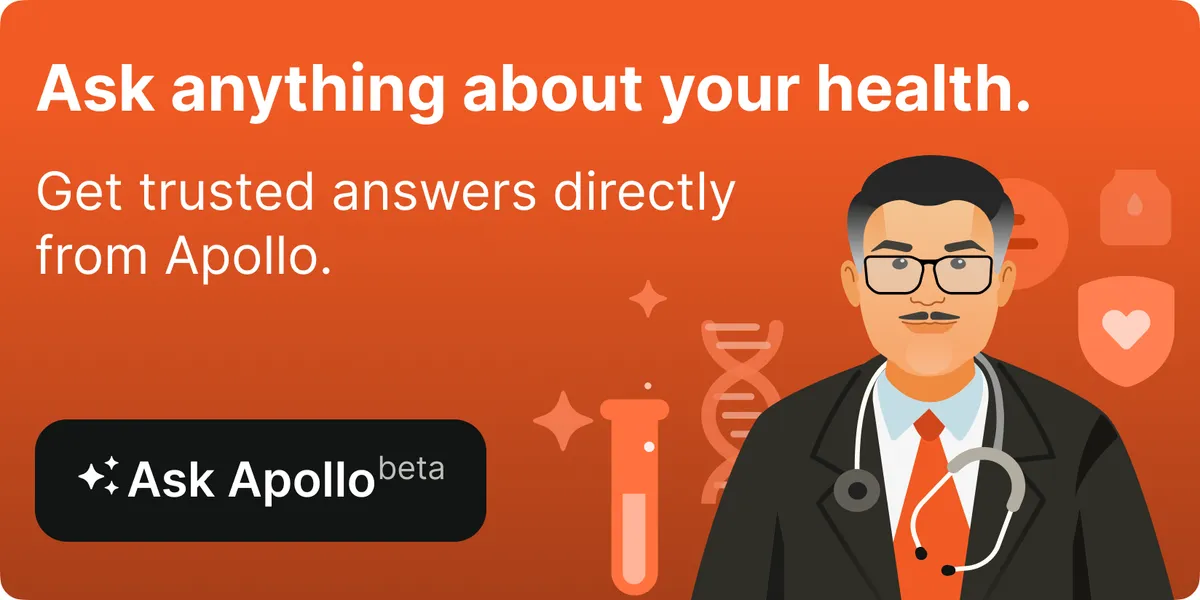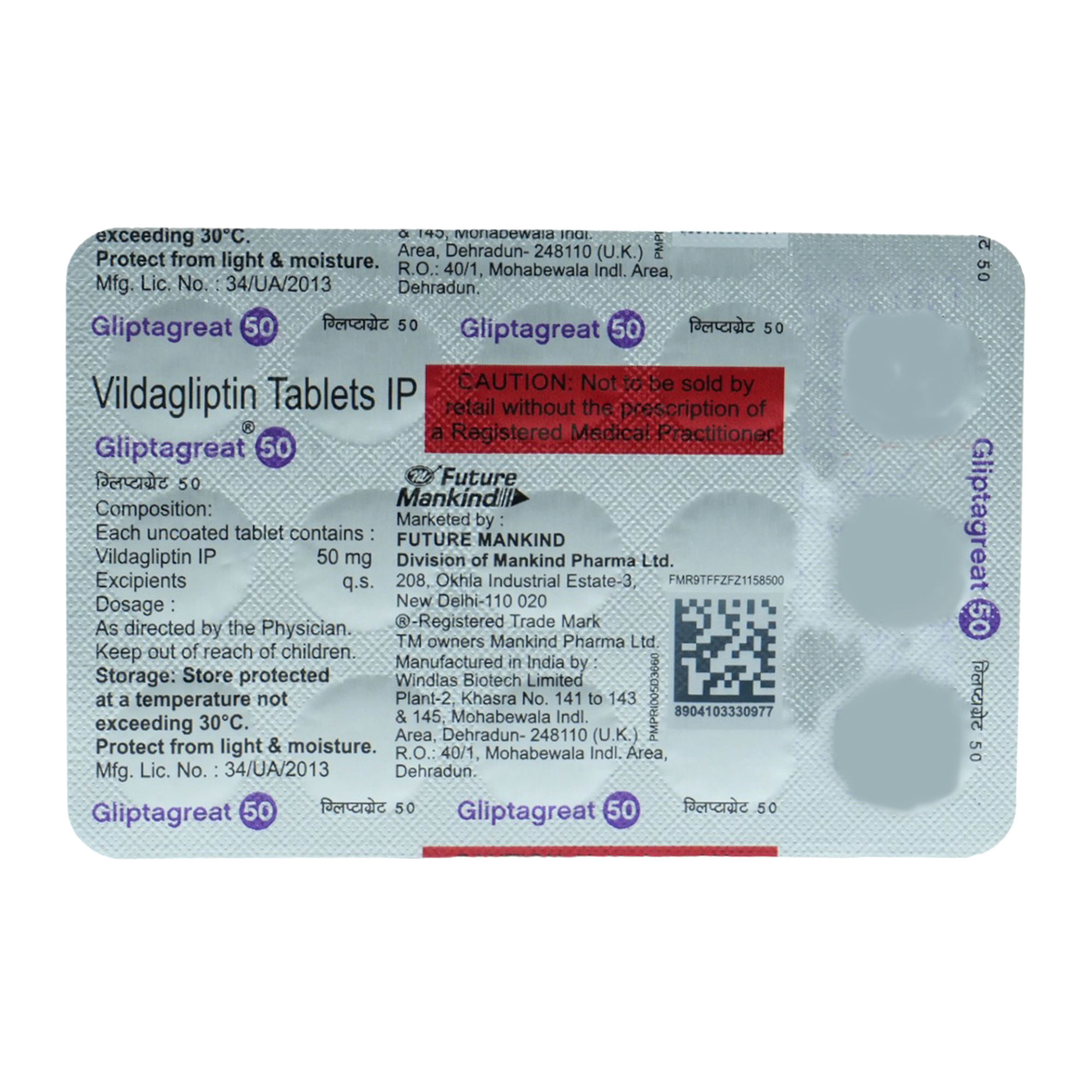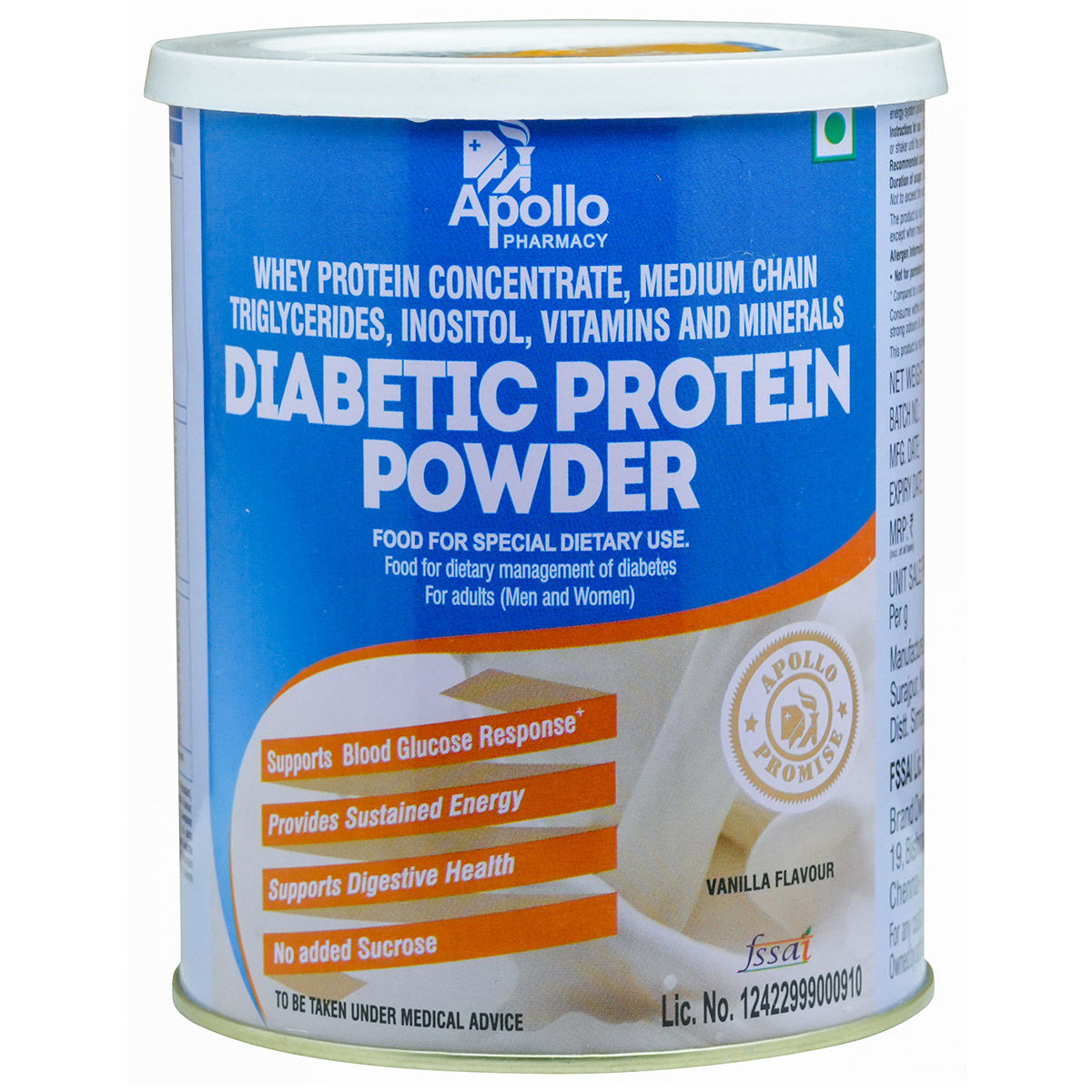Galvus 50 mg Tablet 15's





₹360
(Inclusive of all Taxes)
₹54.0 Cashback (15%)
Galvus 50 mg Tablet is used in the treatment of type 2 diabetes, especially in patients whose blood sugar levels are not controlled by diet and exercise alone. It may be used alone or in combination with other medicines. It contains Vildagliptin, which increases the level of incretin hormone (released after the meal to stimulate the release of insulin from the pancreas) so that sufficient insulin can be produced from the pancreas to lower raised blood sugar levels. In some cases, it may cause side effects such as dizziness, nausea, headache, excessive sweating, low blood sugar levels, and trembling. Before taking this medicine, you should tell your doctor if you are allergic to any of its components or if you are pregnant/breastfeeding, and about all the medications you are taking and pre-existing medical conditions.
Know Your Delivery Time
Provide Delivery Location
 Prescription drug
Prescription drugWhats That

Secure Payment

India's Most Trusted Pharmacy

Genuine Products
Composition :
Manufacturer/Marketer :
Consume Type :
Return Policy :
Expires on or after :
About Galvus 50 mg Tablet
Galvus 50 mg Tablet is used to treat Type 2 diabetes. Type 2 diabetes is a common condition that causes the level of glucose (sugar) in the blood to become too high. It's a lifelong condition that can affect your everyday life. You may need to adjust your diet, take medication, and undergo regular checkups to lead a normal life.
Galvus 50 mg Tablet contains linagliptin, which works by blocking the action of DPP-4, an enzyme that destroys the hormone incretin (the enzyme which helps produce more insulin only when required and reduces the liver's blood sugar level when not needed).
Not everyone who is taking Galvus 50 mg Tablet will get these side effects. The most common side effects of Galvus 50 mg Tablet are low blood glucose levels, nasopharyngitis (infection of nose and throat with the common cold), and headache. Most of these side effects may not require medical attention and resolve gradually over time. However, if the side effects persist or worsen, consult the doctor.
Take this medication by mouth with or without food as directed by your doctor, usually once daily in the morning. The dosage is based on your medical condition and response to treatment. To help you remember, take it at the same time each day. Tell your doctor if your condition does not improve or worsens (if your blood sugar is too high or too low).
Do not take Galvus 50 mg Tablet if you are allergic to any of its components. Galvus 50 mg Tablet should not be stopped even if you feel better, without consulting your doctor as your sugar level keeps changing. If you stop taking Galvus 50 mg Tablet abruptly, it may increase your sugar levels which could further increase the risk of eyesight loss, kidney damage, and nerve damage. Galvus 50 mg Tablet should not be taken if you have type 1 diabetes mellitus or severe kidney or liver disease. Consult the doctor if you are pregnant or breastfeeding.
It is used with a proper diet and exercise program to control high blood sugar in people with type 2 diabetes. Controlling high blood sugar helps prevent kidney damage, blindness, nerve problems, limb loss, and sexual dysfunction. Proper control of diabetes may also lessen your risk of a heart attack or stroke.
Uses of Galvus 50 mg Tablet
Galvus 50 mg Tablet is used in the treatment of type 2 diabetes mellitus. The detailed uses of Galvus 50 mg Tablet are as follows:<br/>
- Managing Type 2 Diabetes: Galvus 50 mg Tablet can be used as part of a comprehensive diabetes management plan for individuals with type 2 diabetes, helping to lower blood sugar levels.<br/>
- Improving Insulin Sensitivity: Galvus 50 mg Tablet may help enhance the body's response to insulin, assisting in better glucose metabolism for those with insulin resistance.<br/>
- Postprandial Blood Sugar Control: Galvus 50 mg Tablet can be effective in managing blood sugar spikes that occur after eating, helping to maintain more stable blood glucose levels throughout the day.<br/>
Directions for Use
• Galvus 50 mg Tablet can be taken with or without food as prescribed by your doctor. • Follow your doctor's instructions on the dosage and timing of this medication to ensure safety. • Swallow Galvus 50 mg Tablet as a whole with a glass of water. • Do not chew, crush or break it.
Medicinal Benefits
- Galvus 50 mg Tablet increases insulin production by the pancreas and decreases glucagon production by the liver. Thus, it helps to control blood sugar levels and prevent further complications due to diabetes.
- Proper diet and regular exercise along with Galvus 50 mg Tablet , will give better results.
- Galvus 50 mg Tablet should not be used in patients with type 1 diabetes and for the treatment of diabetic ketoacidosis.
- Galvus 50 mg Tablet plays a vital role in controlling blood sugar levels and prevents serious complications of diabetes like eyesight loss, kidney, nerve damage, diabetic foot ulcer and delayed wound healing.
How Galvus 50 mg Tablet Works
Storage
- Inform your doctor about the common cold symptoms you're experiencing due to medication.
- Your doctor may adjust your treatment plan, which could include changing your medication, adding new medications, or offering advice on managing your symptoms.
- Practice good hygiene, including frequent handwashing, avoiding close contact with others, and avoiding sharing utensils or personal items.
- Drink plenty of fluids, such as warm water or soup, to help thin out mucus.
- Get plenty of rest and engage in stress-reducing activities to help your body recover. If your symptoms don't subside or worsen, consult your doctor for further guidance.
- Skin rash caused by allergies is due to irritants or allergens. Therefore, avoid contact with such irritants.
- Consult your doctor for proper medication and apply an anti-itch medication. Follow the schedule and use the medication whenever needed.
- Protect your skin from extreme heat and try to apply wet compresses.
- Soak in the cool bath, which gives a soothing impact to the affected area.
- Report the itching to your doctor immediately; they may need to change your medication or dosage.
- Use a cool, damp cloth on the itchy area to help soothe and calm the skin, reducing itching and inflammation.
- Keep your skin hydrated and healthy with gentle, fragrance-free moisturizers.
- Try not to scratch, as this can worsen the itching and irritate your skin.
- If your doctor prescribes, you can take oral medications or apply topical creams or ointments to help relieve itching.
- Track your itching symptoms and follow your doctor's guidance to adjust your treatment plan if needed. If the itching persists, consult your doctor for further advice.
- Know your allergens that cause dermatitis and avoid them.
- Use fragrance-free detergents and soaps.
- Apply moisturizer after taking bath to retain moisture in the skin.
- Apply cool, moist compresses to the rash.
- Talk to your doctor about creams and ointments to manage your dermatitis.
- Please inform your doctor about joint pain symptoms, as they may adjust your medication regimen or prescribe additional medications to manage symptoms.
- Your doctor may prescribe common pain relievers if necessary to treat joint discomfort.
- Maintaining a healthy lifestyle is key to relieving joint discomfort. Regular exercise, such as low-impact sports like walking, cycling, or swimming, should be combined with a well-balanced diet. Aim for 7-8 hours of sleep per night to assist your body in repairing and rebuilding tissue.
- Applying heat or cold packs to the affected joint can help reduce pain and inflammation.
- Please track when joint pain occurs and any factors that may trigger it, and share this information with your doctor to help manage symptoms.
- If your joint pain is severe or prolonged, consult a doctor to rule out any underlying disorders that may require treatment.
- Report to Your Doctor: Inform your doctor about the muscle pain, as they may need to adjust your medication.
- Stretch Regularly: Gentle stretching can help relieve muscle pain and stiffness.
- Stay Hydrated: Adequate water intake supports muscle health by removing harmful substances and maintaining proper muscle function.
- Warm or Cold Compresses: Apply cold or warm compresses to the affected area to reduce pain and inflammation.
- Rest and Relaxation: Adequate rest helps alleviate muscle strain, while relaxation techniques like deep breathing and meditation can soothe muscle tightness, calm the mind, and promote relief from discomfort.
- Gentle Exercise: Participate in low-impact activities, such as yoga or short walks, to improve flexibility, reduce muscle tension, and alleviate discomfort.
- Consult a physician: If your symptoms don't improve or get worse, go to the doctor for help and guidance.
- Inform your doctor about your constipation symptoms. They may adjust your medication or advise alternative treatments.
- Stay hydrated by drinking sufficient of water (at least 8-10 glasses a day) to help soften stool and promote bowel movements.
- Increase fibre intake by eating foods high in fibre, such as fruits, whole grains, vegetables and legumes, to help bulk up the stool.
- Establish a bowel routine by trying to go to the bathroom at the same time each day to train your bowels.
- Engaging in regular exercise, like walking or yoga, can support in bowel movement stimulation.
- Consult your doctor if constipation persists, and discuss alternative treatments or adjustments to your medication.
What if I have taken an overdose of Galvus 50 mg Tablet
Drug Warnings
- Galvus 50 mg Tablet should not be taken if you are allergic to Galvus 50 mg Tablet or any of its ingredients. Prolonged intake of Galvus 50 mg Tablet may cause acute pancreatitis (swollen pancreas) and critical kidney problems.
- Galvus 50 mg Tablet should not be stopped even if you feel better, without consulting your doctor as your sugar level keeps changing.
- Severe allergic reactions might occur in some patients taking Galvus 50 mg Tablet , like anaphylaxis, angioedema (swelling under the skin), and exfoliative skin conditions, including Stevens-Johnson syndrome.
- Please inform your doctor if you have a history of heart disease.
- Patients taking digoxin (a heart medicine) with Galvus 50 mg Tablet should be closely monitored, as severe drug interactions have been observed.
- Galvus 50 mg Tablet should not be used in patients with type 1 diabetes and for the treatment of diabetic ketoacidosis.
- Inform your doctor if you are pregnant or breastfeeding before taking Galvus 50 mg Tablet .
- It may be harder to control your blood sugar when your body is stressed (such as when you have a fever, infection, injury, or surgery).
- Galvus 50 mg Tablet is not recommended for use in children below 18 years of age.
- Be alert for signs of low blood sugar (hypoglycemia), such as sweating, dizziness, dry mouth, dry skin, fast heartbeat, shivering, intense thirst, or frequent urination.
- If you experience any of these symptoms, take honey or sugar candies right away.
Drug-Drug Interactions
Drug-Drug Interactions
Login/Sign Up
Drug-Food Interactions
Drug-Food Interactions
Login/Sign Up
Diet & Lifestyle Advise
- Fill your half plate with starchy veggies, a quarter with proteins, and a quarter with whole grain.
- Eat at regular intervals. Do not take a long gap between a meal or snack.
- Monitor your blood sugar level regularly, especially when there are lots of fluctuations.
- Invest at least 150 min of moderate-intensity physical activity or one hour and 15 minutes of high-intensity exercise every week.
- Lose weight gradually to achieve a healthy body mass index (18.5 to 24.9).
- Replace refined carbohydrates containing whole-grain foods and increase the intake of fruits and veggies and other fiber-enriched foods.
- Reduce intake of saturated fat (or hidden fats) in food like chips, crisps, pastries, biscuits, and samosas. Choose omega 3 fatty acid-containing oils for daily cooking. You can use palm oil, mustard oil, groundnut oil, rice bran oil and safflower oil for frying.
- Do not take stress as it may elevate your blood sugar level. You can adopt stress management techniques like mindfulness to control stress-related blood sugar changes.
- Opt for low-fat dairy products (low-fat yogurt, fat-free milk, and cheese, etc.).
- Keep your blood pressure as normal (140/90) as possible as it reduces the risk of cardiovascular diseases in diabetes patients.
Habit Forming
Therapeutic Class
Product Substitutes
Alcohol
Unsafe
You are recommended to avoid alcohol consumption with Galvus 50 mg Tablet as it may cause high or low blood sugar levels.
Pregnancy
Consult your doctor
Galvus 50 mg Tablet is a Category B pregnancy drug and is generally not recommended for pregnant women. However, please consult a doctor if you are pregnant before taking Galvus 50 mg Tablet .
Breast Feeding
Consult your doctor
The excretion of Galvus 50 mg Tablet in breastmilk is unknown and is not recommended for breastfeeding mothers. Please consult a doctor before using Galvus 50 mg Tablet if you are a breastfeeding mother.
Driving
Unsafe
Galvus 50 mg Tablet may cause dizziness in some people. Therefore, avoid driving if you feel dizzy after taking Galvus 50 mg Tablet .
Liver
Caution
Take Galvus 50 mg Tablet with caution, especially if you have a history of liver disease. The dose may be adjusted by your doctor as required.
Kidney
Caution
Take Galvus 50 mg Tablet with caution, especially if you have a history of Kidney disease. The dose may be adjusted by your doctor as required.
Children
Unsafe
Galvus 50 mg Tablet is not recommended for children below 18 years of age as the safety and effectiveness were not established.

Have a query?
FAQs
Galvus 50 mg Tablet is used in the treatment of type 2 diabetes, especially in patients whose blood sugar levels are not controlled by diet and exercise alone.
Galvus 50 mg Tablet contains Vildagliptin, an anti-diabetic drug that works by preventing the breakdown of incretin hormones, namely: glucagon-like peptide-1 (GLP-1) and glucose-dependent insulinotropic peptide (GIP) that control blood sugar levels. Thereby, it increases the levels of these two hormones. Galvus 50 mg Tablet increases insulin production by the pancreas and decreases glucagon production by the liver. Thus, it helps to control blood sugar levels.
Yes, you may take Galvus 50 mg Tablet with metformin. However, please consult a doctor before using Galvus 50 mg Tablet with other medicines so that the dose may be adjusted appropriately.
Galvus 50 mg Tablet should be used with extreme caution in patients suffering from or who have a history of pancreatitis (swelling of the pancreas) as it may increase the risk of recurrent pancreatitis or worsen the condition. However, if you experience any symptoms such as vomiting, stomach pain or nausea, consult a doctor immediately.
Galvus 50 mg Tablet alone does not cause low blood sugar levels. However, low blood sugar levels may occur if Galvus 50 mg Tablet is taken along with other antidiabetic medicines, alcohol intake, exercise more than usual, delay or miss snacks or meal. However, if you experience any signs of low blood pressure such as dizziness, nausea, light-headedness, dehydration or fainting, please consult a doctor.
No, you are not recommended to stop taking Galvus 50 mg Tablet on your own as discontinuing Galvus 50 mg Tablet suddenly may cause recurring symptoms or worsen the condition. However, if you experience any difficulty while taking Galvus 50 mg Tablet , please consult your doctor so that alternative medicine may be prescribed.
Yes, diabetic skin lesions are common complications of diabetes. However, you are recommended to follow instructions for foot and skincare as advised by your doctor, and if you notice the onset of any new ulcers or blisters while taking Galvus 50 mg Tablet , please consult a doctor.
Maintain a healthy diet and exercise regularly. Limit sugar intake and avoid smoking & alcohol consumption. Manage stress by doing meditation or yoga.
Hypoglycaemia is a condition in which the blood sugar/glucose levels are lower than normal.
Symptoms of hypoglycaemia include cold sweat, headache, rapid heartbeat, feeling sick, drowsiness, unusual tiredness, and weakness.
Galvus 50 mg Tablet should be taken as prescribed by the doctor. Talk to the doctor if you have any concerns.
Galvus 50 mg Tablet does not cause weight gain. It is weight-neutral when administered as a monotherapy.
Galvus 50 mg Tablet contains vildagliptin. Though vildagliptin and sitagliptin both belong to the class of anti-diabetic drugs called dipeptidyl peptidase-4 (DPP-4) inhibitors, vildagliptin is not the same as sitagliptin.
Side effects of Galvus 50 mg Tablet are dizziness, nausea, headache, excessive sweating, low blood sugar levels, and trembling. Most of these side effects may not require medical attention and gradually resolve over time. However, if the side effects persist or worsen, please consult your doctor.
Country of origin
Manufacturer/Marketer address
Customers Also Bought
Disclaimer
Author Details
We provide you with authentic, trustworthy and relevant information
Buy best Diabetics products by
Torrent Pharmaceuticals Ltd
Intas Pharmaceuticals Ltd
Eris Life Sciences Ltd
Sun Pharmaceutical Industries Ltd
Lupin Ltd
Micro Labs Ltd
Mankind Pharma Pvt Ltd
Cipla Ltd
Macleods Pharmaceuticals Ltd
Lloyd Healthcare Pvt Ltd
Abbott India Ltd
Alkem Laboratories Ltd
Primus Remedies Pvt Ltd
Glenmark Pharmaceuticals Ltd
Aristo Pharmaceuticals Pvt Ltd
Dr Reddy's Laboratories Ltd
Wockhardt Ltd
USV Pvt Ltd
La Renon Healthcare Pvt Ltd
Emcure Pharmaceuticals Ltd
Ajanta Pharma Ltd
Ipca Laboratories Ltd
Alembic Pharmaceuticals Ltd
Fusion Health Care Pvt Ltd
Corona Remedies Pvt Ltd
Hbc Life Sciences Pvt Ltd
East West Pharma India Pvt Ltd
Eswar Therapeutics Pvt Ltd
Alteus Biogenics Pvt Ltd
Elbrit Life Sciences Pvt Ltd
Medley Pharmaceuticals Ltd
Zydus Healthcare Ltd
Ranmarc Labs
Sinsan Pharmaceuticals Pvt Ltd
Mitoch Pharma Pvt Ltd
Msn Laboratories Pvt Ltd
Akumentis Healthcare Ltd
Unison Pharmaceuticals Pvt Ltd
Arkas Pharma Pvt Ltd
Acmedix Pharma Llp
Sanofi India Ltd
Novo Nordisk India Pvt Ltd
Tas Med India Pvt Ltd
Leeford Healthcare Ltd
Blue Cross Laboratories Pvt Ltd
Q Check Pharmaceuticals
Xemex Life Sciences
Diacardus Pharmacy Pvt Ltd
Jubilant Lifesciences Ltd
Neucure Lifesciences Pvt Ltd
Nirvana India Pvt Ltd
Aareen Healthcare Pvt Ltd
Anthem Bio Pharma
Systopic Laboratories Pvt Ltd
Alvio Pharmaceuticals Pvt Ltd
Panacea Biotec Ltd
Talent India Pvt Ltd
Edoc Life Sciences Pvt Ltd
Franco Indian Pharmaceuticals Pvt Ltd
Shrrishti Health Care Products Pvt Ltd
Akesiss Pharma Pvt Ltd
Elinor Pharmaceuticals (P) Ltd
Hicxica Formulations Pvt Ltd
Indoco Remedies Ltd
Saan Labs
Spectra Therapeutics Pvt Ltd
Stature Life Sciences Pvt Ltd
Sydmen Life Sciences Pvt Ltd
Zydus Cadila
Biocon Ltd
Capital Pharma
Koye Pharmaceuticals Pvt Ltd
Remedy Life Sciences Pvt Ltd
Verse Lifesciences
MEDICAMEN BIOTECH LTD
Sanz Pharmaceuticals
Converge Biotech Pvt Ltd
Erinyle Health Care Pvt Ltd
FDC Ltd
Lippon Pharma Pvt Ltd
MERAKI HEALTH
Morepen Laboratories Ltd
Atos Lifesciences Pvt Ltd
Azkka Pharmaceuticals Pvt Ltd
Jarun Pharmaceuticals Pvt Ltd
Opsis Care Lifesciences Pvt Ltd
Vasu Organics Pvt Ltd
Eli Lilly and Company (India) Pvt Ltd
Orris Pharmaceuticals
Daylon healthcare pvt Ltd
Elder Pharmaceuticals Ltd
Erinyle Pharma
Knoll Healthcare Pvt Ltd
N Line Healthcare Pvt Ltd
RPG Life Sciences Ltd
Cadomed Pharmaceuticals India Pvt Ltd
Elicad Pharmaceuticals Pvt Ltd
Heal (India) Laboratories Pvt Ltd
Medicure Life Sciences Pvt Ltd
Olcare Laboratories Pvt Ltd
Wallace Pharmaceuticals Pvt Ltd
Walnut Pharma Pvt Ltd
Addii Biotech Pvt Ltd
Arrient Healthcare Pvt Ltd
Eysys Pharmaceutical Pvt Ltd
Glynis Pharmaceuticals Pvt Ltd
Precia Pharma Pvt Ltd
Zuventus Healthcare Ltd
Bal Pharma Ltd
Geneaid Pharmaceuticals
Lividus Pharmaceuticals Pvt Ltd
Mcronus Lifescience Pvt Ltd
Biochem Pharmaceutical Industries Ltd
Cadila Pharmaceuticals Ltd
Cresha Lifesciences
Ellora Pharmaceutical
Geniemed Pvt Ltd
Intra Life Pvt Ltd
Natco Pharma Ltd
Orsim Pharma
Proqol Health Care Pvt Ltd
Wonset Health Care Pvt Ltd
Indiabulls Pharmaceuticals Pvt Ltd
Lakshya Life Sciences Pvt Ltd
Lia Life Sciences Pvt Ltd
Lincoln Pharmaceuticals Ltd
Retra Life Science Pvt Ltd
Three Dots Life Science Pvt Ltd
Levenr Pharmaceuticals Ltd
Nivulia Lifesciences Pvt Ltd
Ozone Pharmaceuticals Ltd
Walron Health Care Pvt Ltd
Aprica Healthcare Ltd
Arica Pharmaceutical Pvt Ltd
Cadell Healthcare Pvt Ltd
Divine Savior Pvt Ltd
Orchis Pharmaceuticals
Diocard Pharmaceuticals Pvt Ltd
Indchemie Health Specialities Pvt Ltd
J B Chemicals & Pharmaceuticals Ltd
Kotak Life Sciences
Zinnia Life Sciences Pvt Ltd
Aretaeus Pharmaceuticals Pvt Ltd
Inuen Healthcare Pvt Ltd
Knoll Pharmaceuticals Ltd
Kreios Laboratries Pvt Ltd
Med Manor Organics Pvt Ltd
Risemarker Pharmaceuticals
Shinemax Pharma India Pvt Ltd
Spectra Pharmaceuticals
4Care Lifesciences Pvt Ltd
Auxesia Life Sciences Pvt Ltd
Carecroft Medic Pvt Ltd
Ckris Laboratories Pvt Ltd
Cognitive Life Sciences Pvt Ltd
Dr Moni Pharmaceuticals Pvt Ltd
Enovus Healthcare Pvt Ltd
Europa Healthcare Pvt Ltd
Finecure Pharmaceuticals Ltd
Ifimed Pharmaceuticals Pvt Ltd
Signova Pharma
Tesla Labs
Aar Ess Remedies Pvt Ltd
Allysia Lifesciences Pvt Ltd
Joslin Pharmaa India Pvt Ltd
Mano Pharma
Metalis Lifesciences Pvt Ltd
Redmax Pharma
Bilberry Pharmaceutical Pvt Ltd
Dios Lifesciences Pvt Ltd
Econ Healthcare
Invision Medi Sciences Pvt Ltd
Newgen Pharma
Troikk Cardiac Care Ltd
ALICAN PHARMACEUTICAL PVT LTD
Avinash Health Products Pvt Ltd
Cadila Healthcare Ltd
Centaur Pharmaceuticals Pvt Ltd
Cordial Lifesciences Pvt Ltd
Fourrts India Laboratories Pvt Ltd
Regenix Drugs Ltd
Seluria Pharmaceuticals
Siskan Pharma Pvt Ltd
Astorion Pharmaceuticals Pvt Ltd
MEDITECH PHARMA
Makeway Formulations Pvt Ltd
Medglobe Biotek Pvt Ltd
Novosys Lifesciences Pvt Ltd
Pharma Fabrikon
RB Pharmaceuticals
Saanvika Pharmaceuticals
ANCERORN PHARMA
Aamorb Pharmaceuticals Pvt Ltd
Aprica Pharmaceuticals Pvt Ltd
Brzee Medscience
Elsker Life Science
Empower Life Sciences
Glivita Pharma Pvt Ltd
Howay Pharmaceutical Llp
Icon Life Sciences
Live Pharma Ltd
Nester Lifescience Pvt Ltd
Novartis India Ltd
Ordain Health Care Global Pvt Ltd
Origin Health Care Pvt Ltd
Pristine Pearl Pharma Pvt Ltd
Reps Pharmaceuticals
Saanso Pharma Pvt Ltd
Sanomed Health Care
Skylane Pharmaceuticals
Abeest International Pvt Ltd
Alathea Biotec Pvt Ltd
Astra Zeneca Pharma India Ltd
Auspharma Pvt Ltd
Balint Pharmaceuticals
CND Pharma Pvt Ltd
Ekard Life Sciences Pvt Ltd
Ergos Life Sciences Pvt Ltd
Glenon Healthcare
Ideal Life Sciences Pvt Ltd
Kepler Healthcare Pvt Ltd
Medlogix Bio Lifesciences
Merck Ltd
Mexican Wave Pharma Ltd
Neocardiab Care
Saiboon Lifecare Pvt Ltd
Skysun Life Sciences Pvt Ltd
Steris Healthcare
Sunmarker Pharma
Suraksha Pharma Pvt Ltd
Syswin Pharmaceuticals Pvt Ltd
Troikaa Pharmaceuticals Ltd
Trust Pharmaceuticals
Wings Pharmacuticals Pvt Ltd
Aagam Life Sciences Pvt Ltd
Adisys Healthcare
Eirene Pharmaceuticals
El Dorado Biotech Pvt Ltd
Goldline Pharmaceuticals
Graviti Pharmaceuticals Pvt Ltd
Hauz Pharma Pvt Ltd
Health Berry Lifesciences Pvt Ltd
Higlance Laboratories Pvt Ltd
Kaps Three Life Sciences Pvt Ltd
Medieos Life Sciences Llp
Nacc Pharmaceutical Pvt Ltd
Prevego Healthcare & Research Pvt Ltd
Shine Pharmaceuticals Ltd
Verlen Labs Pvt Ltd
Bazio Pharmaceuticals Pvt Ltd
Beat Pharmaceuticals
Bricent Healthcare Pvt Ltd
Danex Biolife Science Pvt Ltd
Elixia Life Science
Foncer Pharma Pvt Ltd
Larion Life Sciences Pvt Ltd
Larivin Pharma Pvt Ltd
Laures Pharmaceuticals Pvt Ltd
Medsmile Pharmaceuticals Pvt Ltd
Pigeon India Pvt Ltd
Semicon Pharmaceuticals Pvt Ltd
U&V Health Care
Uniza Healthcare Llp
Vasolife Health Care Pvt Ltd
Vidakem Lifesciences Pvt Ltd
Arist Healthcare
Arlak Biotech Pvt Ltd
Beats Pharmaceuticals
Bioaltus Pharma Pvt Ltd
Boehringer Ingelheim India Pvt Ltd
Brigade Pharmaceuticals Pvt Ltd
Cytech Pharmaceuticals Pvt Ltd
DR CURE PHARMACEUTICALS INDIA PVT LTD
Fidus Healthcare Llp
Healing Pharma
Hetero Drugs Ltd
Hetero Healthcare Pvt Ltd
Iva Healthcare Pvt Ltd
Maxford Labs Pvt Ltd
Medgen Drugs And Laboratories Pvt Ltd
Medicron Life sciences Pvt Ltd
Medicyte Pharmaceutical Pvt Ltd
Medopharm Pvt Ltd
Nouvelle Pharmaceuticals
Novalab Healthcare Pvt Ltd
Oak Vance Life Sciences Pvt Ltd
Pillix Health Care
Sidna Healthcare Pvt Ltd
Strides Shasun Ltd
Tiska Life Sciences
Vishaura Healthcare Pvt Ltd
Vjovis Health Care Pvt Ltd
Zee Laboratories Ltd
Anax Life Sciences Pvt Ltd
Apicem Pharmaceuticals Pvt Ltd
BSA Pharma Inc
Biofloris Pharmaceuticals Pvt Ltd
Calevance International Pvt Ltd
Curyz Lifesciences Pvt Ltd
Doctors & Drugs
Recommended for a 30-day course: 2 Strips
































